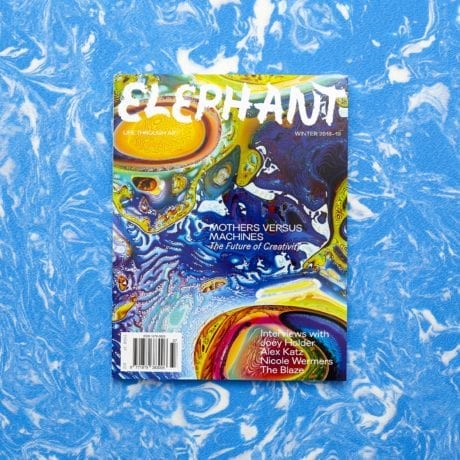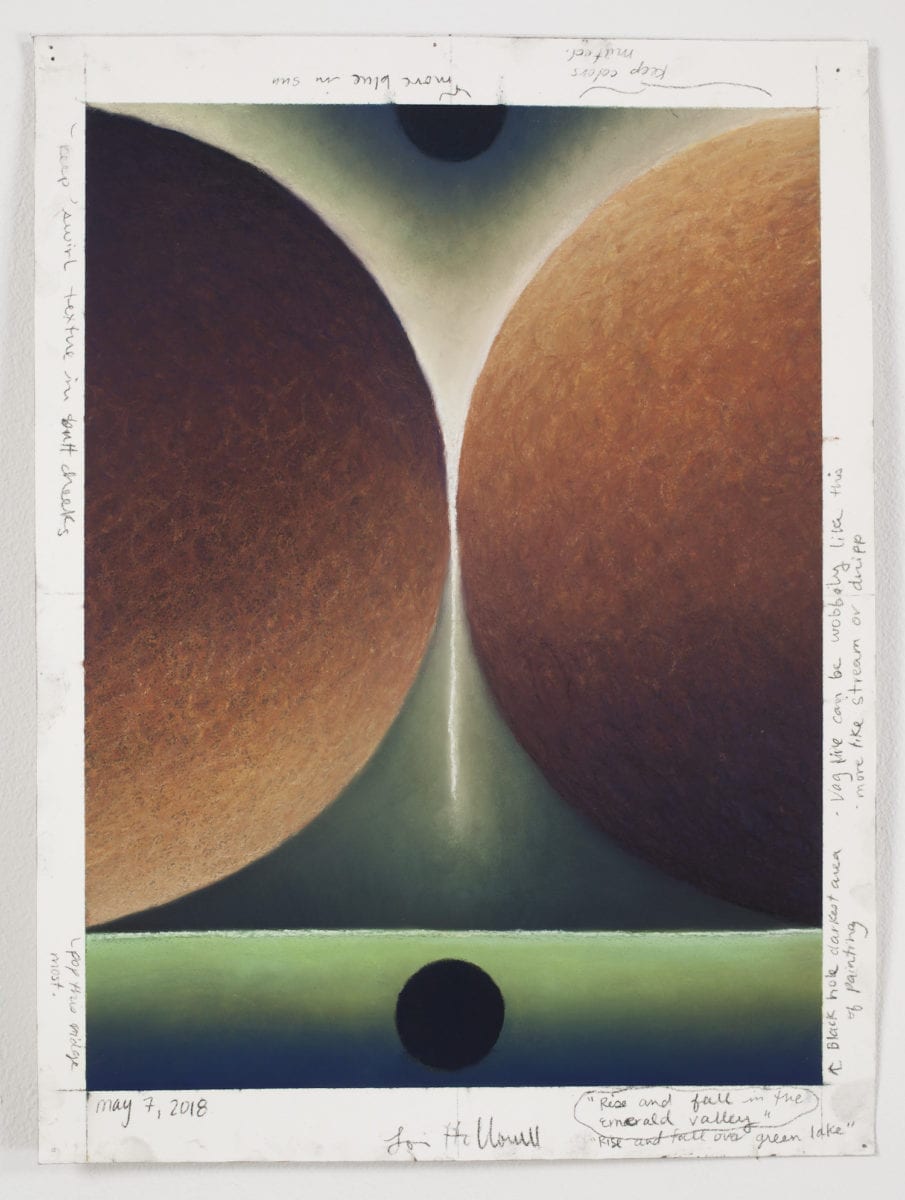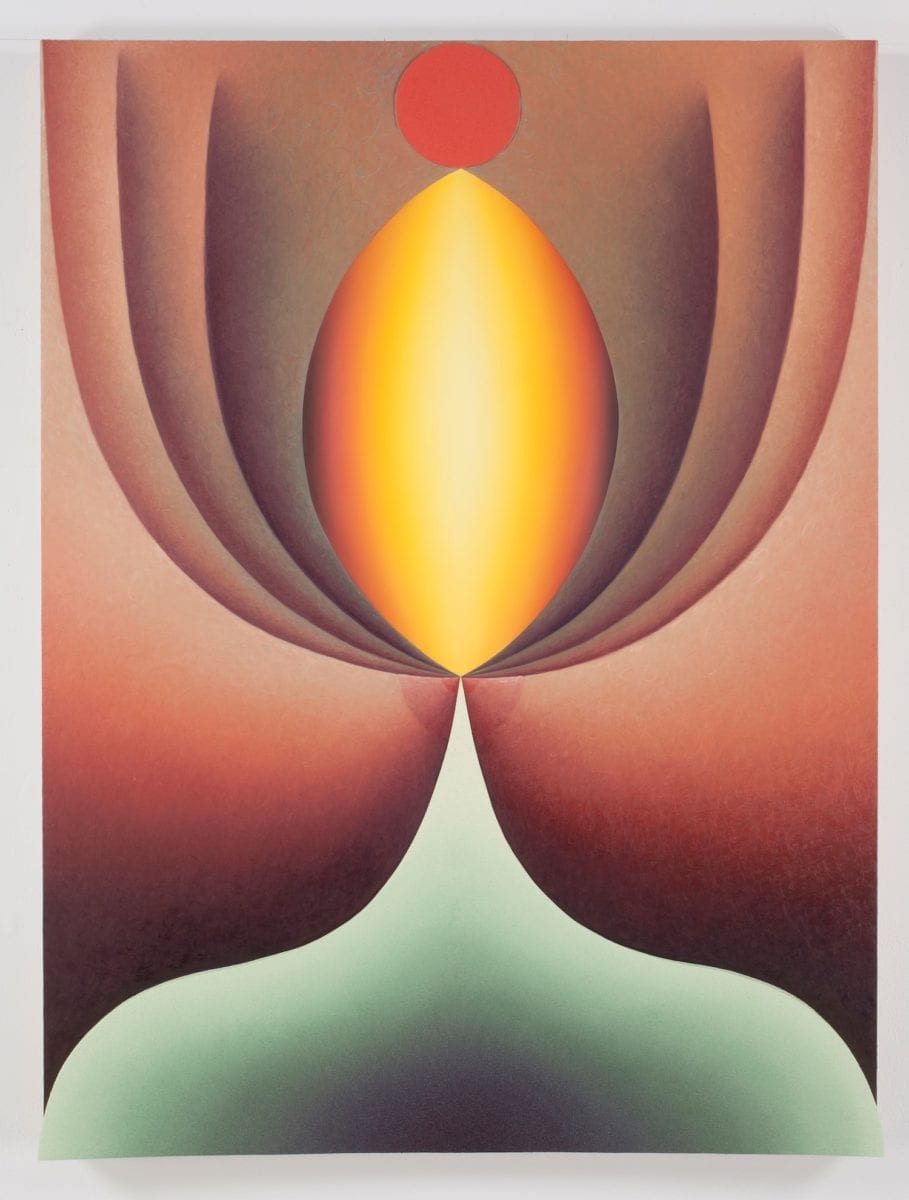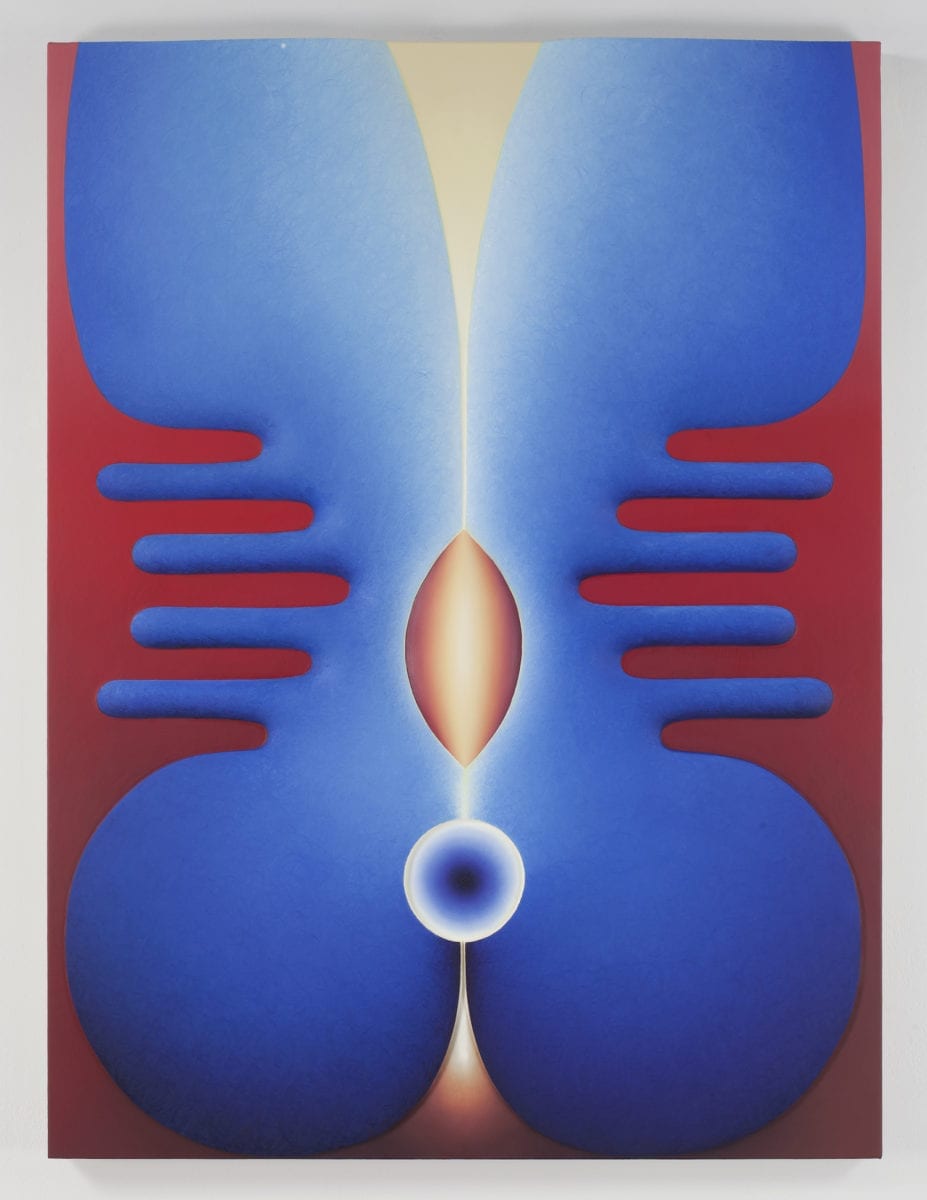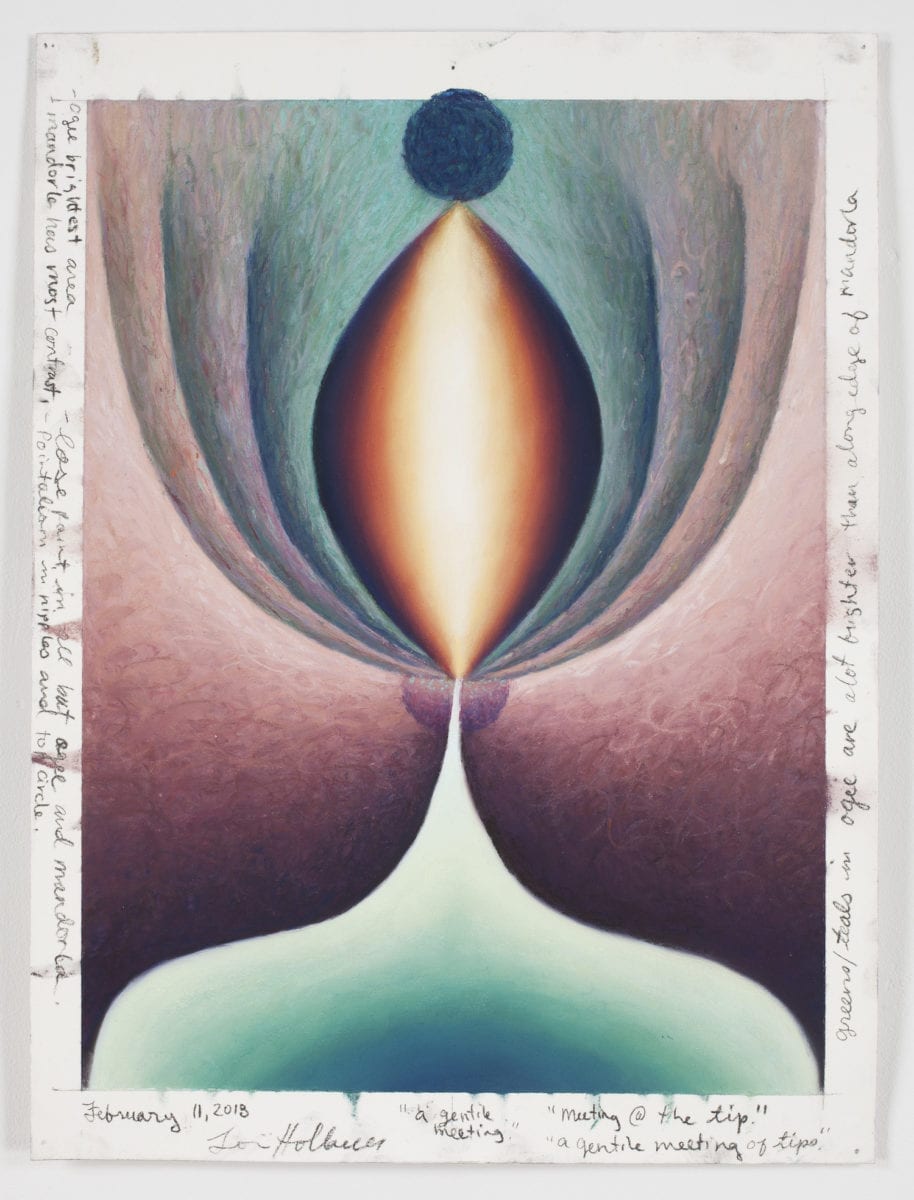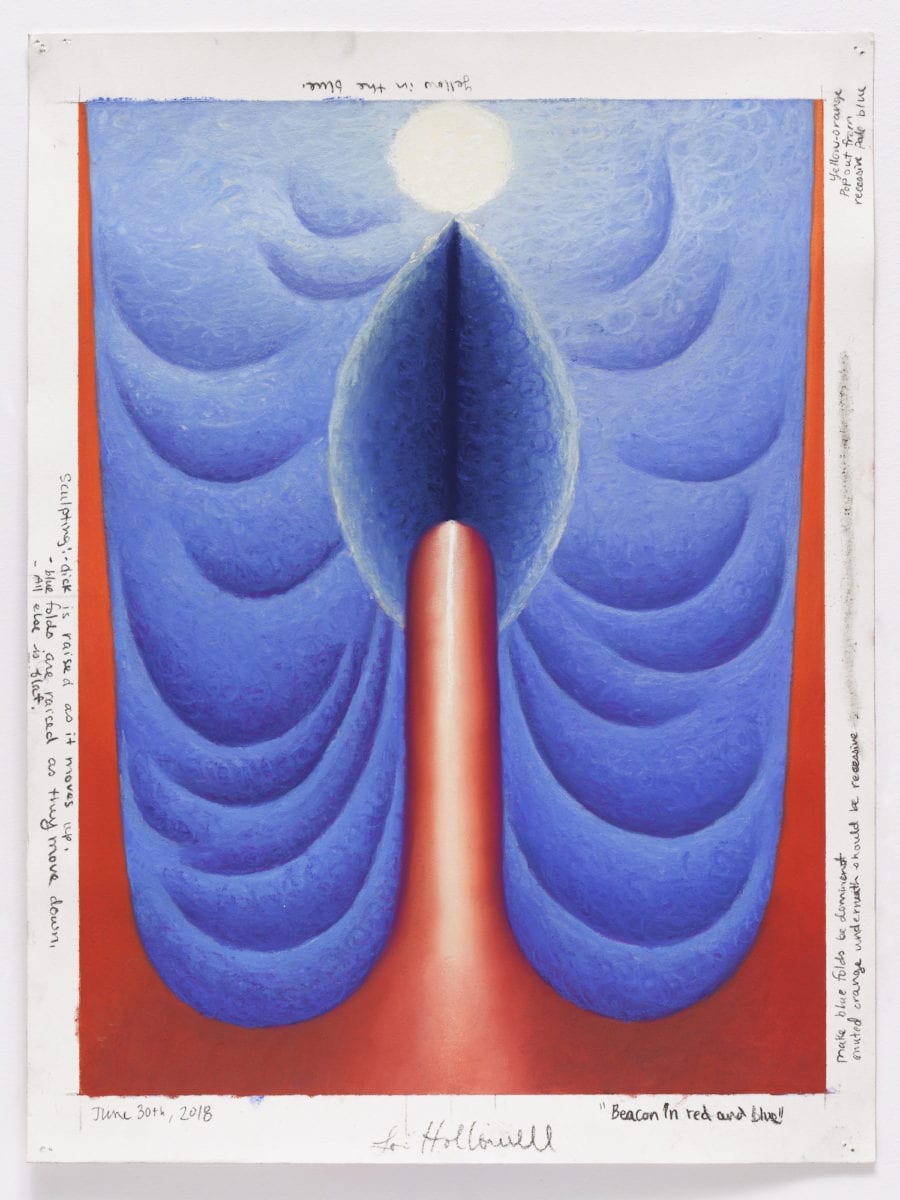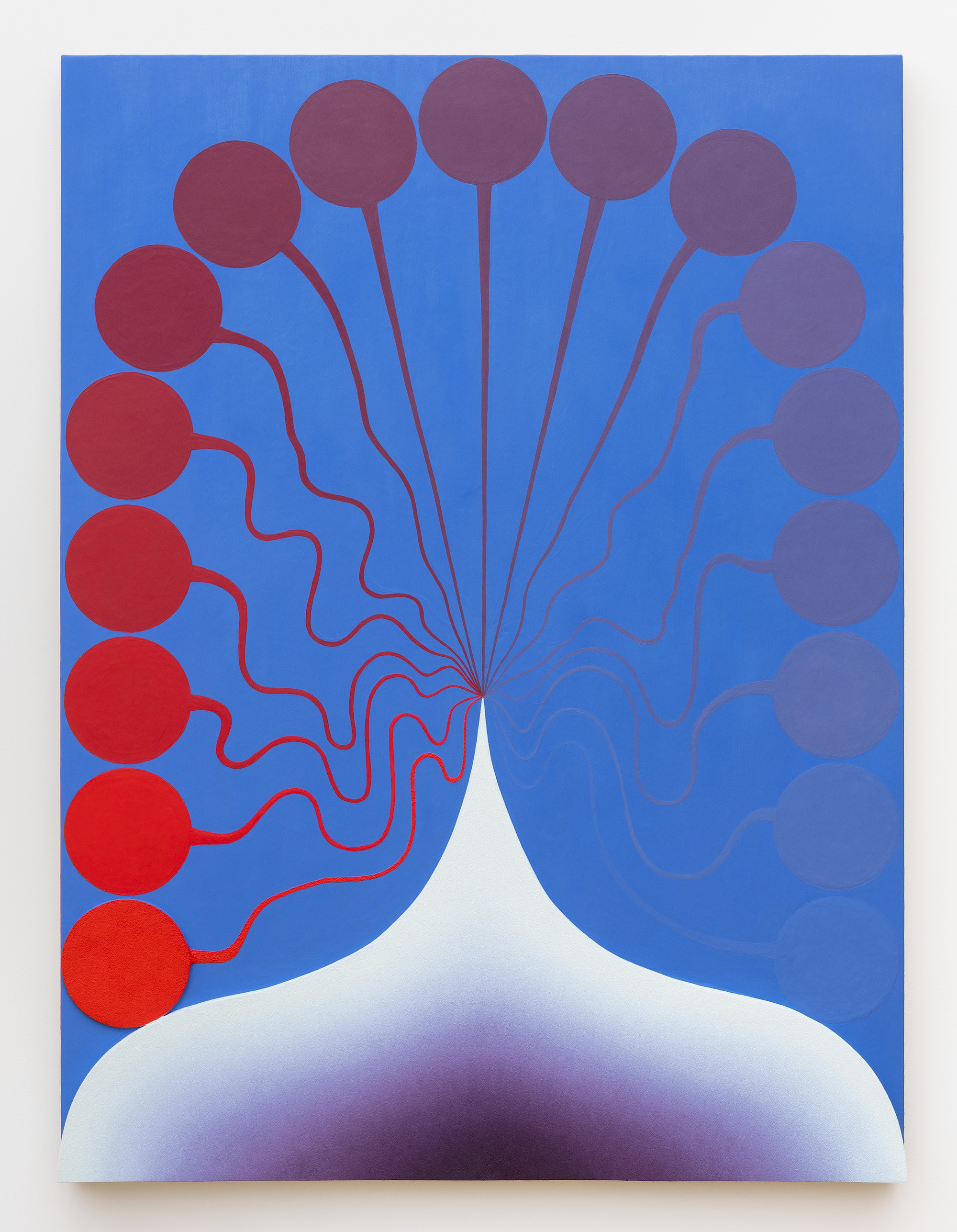
There has always been something of an optical illusion in your work, but recently you’ve been pushing the realms of three-dimensionality in your paintings, how did that come about?
I’ve always been interested in geometric flatness, but I wanted to start exploring more physically by building up small sections of my paintings. In the show at Pace Gallery in Hong Kong [in 2018], I started experimenting with the “vagina” corners, in order to give them more emphasis. Now, I’m working with much thicker and more obvious three- dimensional elements. I’ve always been fascinated by chiaroscuro and have evoked that in my paintings, but now I’m working with sculptured shadow too.
The light in your work emanates like a powerful force, as if it is actually fluorescent. You’ve mentioned this relates to sensuality…
I see light as representing this orgasmic force, it has this physicality that I try to recreate through colour, which in itself is competing with actual light beyond the context of the painting. This fluorescence also relates to the body’s root core, this idea of the chakra. You also see it in the vaginal “manodorla” [an almond-shaped frame that often surrounds Christ and the Virgin Mary in Christian art] which I use a lot. This symbol has almost become a dominant, complete character in my work, and it sets the tone for each painting.
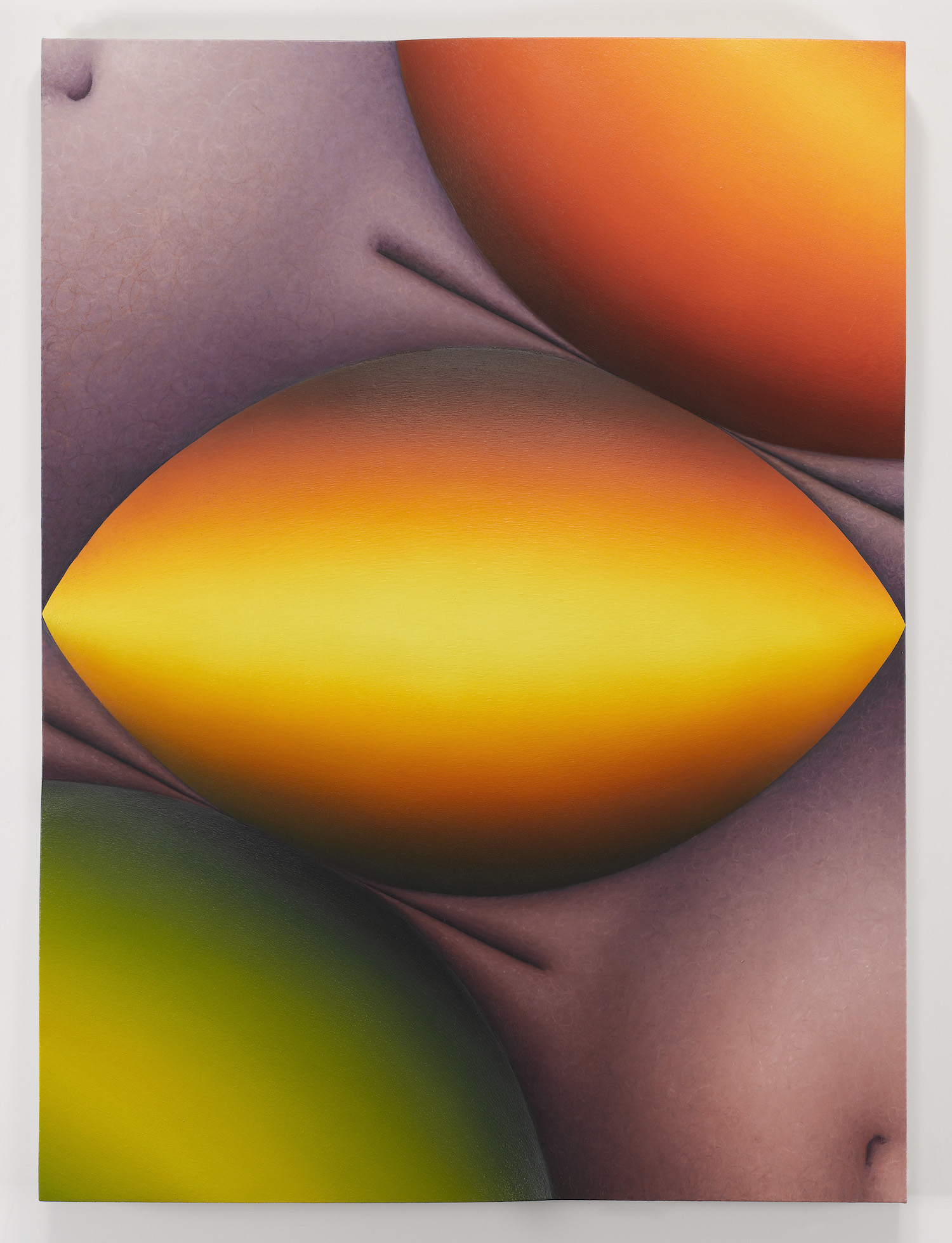
“I always want to leave a little gift for the people who see my work in person”
So your work is directly related to your body and personal experience?
Definitely. I originally began by making paintings that were the same general dimensions as my “core” area, the vagina and ovaries. There is a direct connection to my own bodily experiences, whether that is sex, orgasming, being on my period or, now, being pregnant.
Has being pregnant directly influenced your work?
Yes, on a day-to-day level I’m not supposed to exert myself in the studio as much (though of course I do) but there is also a heaviness within the body. It’s led to me experimenting with the sculptural forms in my work, like in Something Acidic, where the vaginas and bellies are fuller, which reflects my own physicality. Being pregnant has also forced me to let go a bit, and to just do the work I really want to do and not worry about how it all fits together.
- Left: Rise and Fall in the Emerald Valley, May 7, 2018; Right: Rise and Set Over Bloody Water, June 10, 2018
It’s exciting to see your paintings in the real life,
because everything is flattened when it is seen digitally, whereas in actuality these works are full of rough spongy texture and these incredible, tightly sketched spirals that add to the sense of depth, not to mention the magic-eye trickery of the three-dimensionality.
I always want to leave a little gift for the people who see my work in person. We live in a culture where images are disseminated so regularly, which means you can lose the sense of really being with a painting and the emotion that it evokes. It funny because people got really excited about seeing my preparatory pastel sketches at the Pace show, this idea of “seeing my hand”, because they don’t see that in my tight, precise way of painting. There’s also this lingering notion of “how a woman paints”, of being tentative and tight as opposed to really gestural.
- Left: A Gentle Meeting of Tips, 2018; Right: Touchy Subject, 2018
You work has often been compared to Georgia O’Keeffe and Judy Chicago, are those two artists you have looked to directly?
For sure, though I wouldn’t say I’m looking to O’Keeffe to understand how to make a painting. I’m more interested in her career trajectory, how she created space for herself and how her paintings changed over time. With Chicago, I’m engaging with her symbology, and how painting can critically engage with feminist issues. Chicago comes from an era where there were so many bigger struggles, and she wants to change the world with her work. Both of these artists have been so instrumental in creating space for artists like me to be able to draw on their sexuality and personal experience, without that being labelled as singularly “feminine”.
I live in New York and have always been inspired by the art deco architecture you see everywhere, but I’m actually from outside San Francisco, and that Californian light is something really special, like what O’Keeffe experienced in New Mexico and translated into her paintings. A lot of my colours—these bright, bold colours—come from embracing my Californian childhood, as opposed trying to embody the serious New Yorker.
- Left: Melting at the Tip, February 11, 2018; Right: Beacon in red and Blue, June 30, 2018
There’s definitely something of the psychedelic in your paintings too, does that come back to your Californian roots?
I guess so. My parents aren’t hippies, and I don’t think of myself as spiritual or religious, but all of those images, the posters and art, I’m sure I’ve absorbed them in some way. My mum is also a Burner (someone who goes to Burning Man festival) and she has designed posters and other things for her Burning group, and they definitely draw on that aesthetic!
There is something a bit trippy about them for sure. I almost want to reach out and grab them, lick them even.
Oh yeah, I’d love to be able to do something where people can handle my work. I’ve been thinking, if I could make the three-dimensional surfaces beforehand, maybe I could let people touch them before they were painted, to really get a sense of all these curves and forms. I’d have to look out for greasy hands though!
This feature originally appeared in issue 37
BUY ISSUE 37